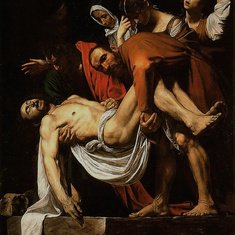|
Clue
|
Answer
|
|
Mughal emperor Shan Jahan orders the construction of this mausoleum to house the tomb of his favorite wife.
|
In 1648, workers finish the Taj Mahal.
|
|
Jan van Riebeeck's establishment of this colony launches the destruction of ancient south African cultures.
|
In 1652, Dutch settlers led by Jan van Riebeeck establish Cape Town and begin destruction of ancient south African cultures.
|
|
This philosopher points out that although we may have no way of knowing whether we are dreaming or awake, if we are thinking, we know that we exist.
|
In 1637, Descartes writes, "Je pense, donc je suis."
|
|
Emperor Zhu Yongzhian's suicide marks the end of this dynasty, which reigned for over 250 years.
|
In 1644, the last Ming emperor, Zhu Yongzhian, hangs himself.
|
|
When a milita club hires this successful Dutch portrait artist to paint their portrait, he decides not to pain them standing in rows, but to show them marching into the streets of Amsterdam.
|
In 1642, Rembrandt finishes "The Night Watch."
|
|
The best-known writer in Japan's history
|
Basho. In 1680, Basho. Munefusa begins using the pen name "Basho."
|
|
Two years after Felipe IV, 16, becomes King of Spain, he makes this 24-year-old from Seville his "court painter," and for the next 37 years no one else is permitted to depict the King.
|
In 1656, Velasquez, 57, paints "Las Meninas."
|
|
This painter of dramatic religious subjects that empahsize the poverty of its subjects is 36 when he shoots a man in Malta and is locked in a cut-rock cell in Malta's Fort Sant Angelo Prison from which escape is impossible. He later escapes.
|
In 1603, Caravaggio paints "The Entombment."
|
|
The best-known playwright in the Common Era, after Shakespeare.
|
In 1664, Moliere's comedy "Tartuffe" opens in Paris.
|
|
|
Clue
|
Answer
|
|
The largest church in the world
|
In 1626, workers finish building St. Peter's Basilica.
|
|
The best-known painter born in the 16th century.
|
In 1638, Rubens paints "The Consequences of War."
|
|
Some historians say a 27-year struggle between a new Chinese dynasty and its predecessor kills 25 million before the new dynasty breaks the siege of Nanjing led by THIS MILITARY LEADER of the old dynasty.
|
In 1662, the soldiers of Qing emperor Kangxi break the siege of Nanjing led by Ming loyalist Koxinga.
|
|
The best-known scientist in history
|
Newton. In 1687, Isaac Newton's "Mathematical Principles of Natural Philosophy" explains why objects in space and on earth move the way they do.
|
|
In 1600, this city had a population of one million, which probably made it the largest in the world at the time.
|
In 1600, Beijing has a population of as many as one million, making it one of the largest cities in the world.
|
|
This math professor from the University of Padua builds a powerful telescope that helps him discover how wrong many common beliefs about space are and is subsequently accused of undermining belief in the BIble.
|
In 1609, Galileo uses his telescope to observe the night sky.
|
|
The best-known writer in the history of the Spanish language.
|
In 1605, Cervantes publishes "El ingenioso hidalgo Don Quixote de la Mancha."
|
|
The best-known painter born in the 17th century.
|
In 1657, Vermeer begins painting scenes of Dutch daily life.
|
|
When Catholic Ferdinand II becomes the King of Bohemia (today a region of the Czech Republic) and bans new Protestant churches, he triggers THIS WAR, which ends up killing 8 million.
|
In 1648, Thirty Years War ends.
|
|

